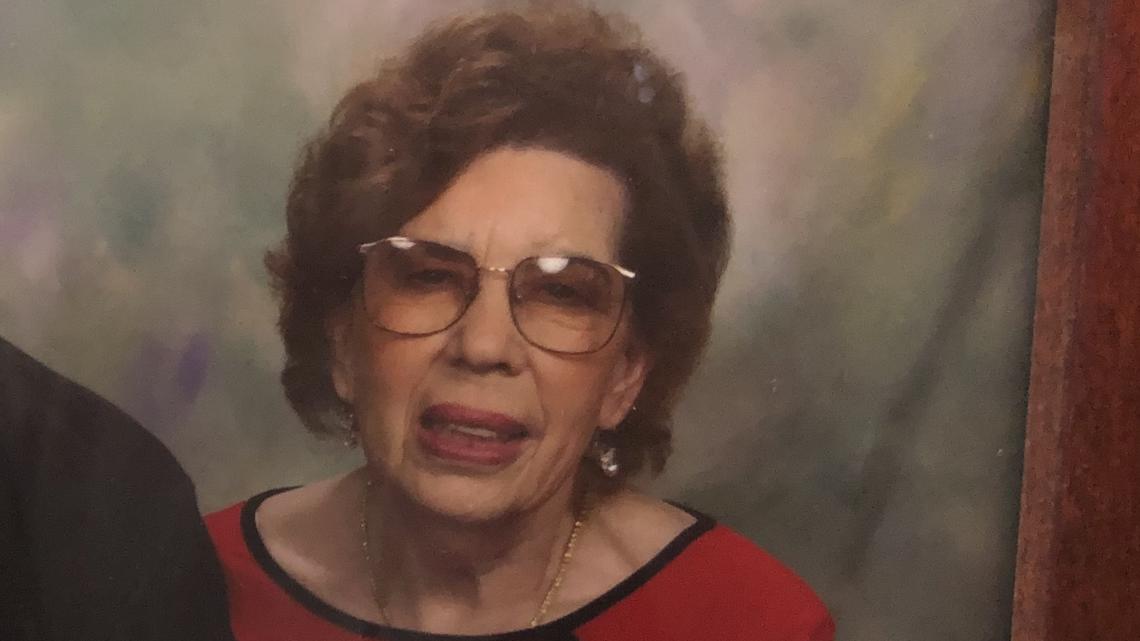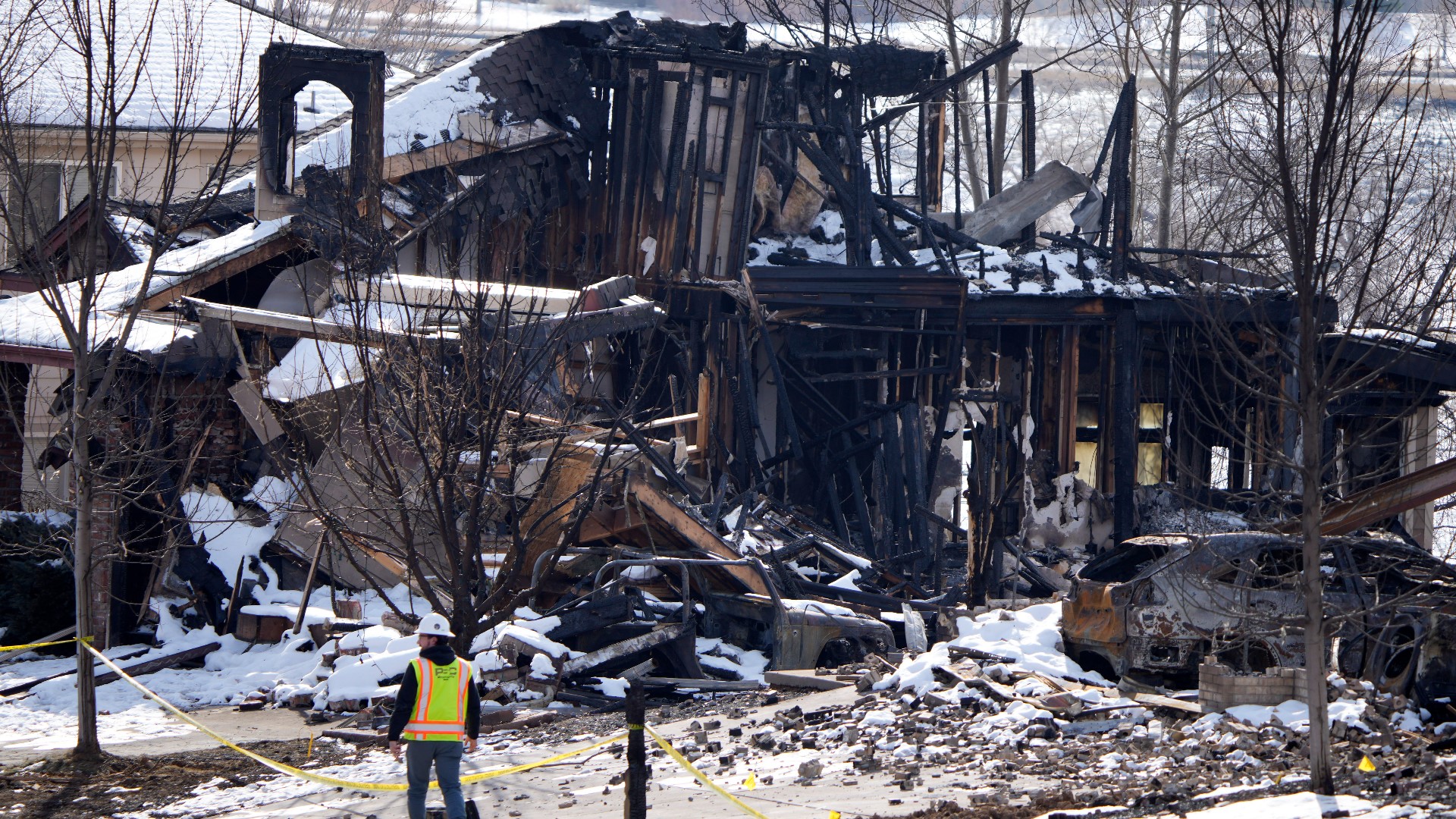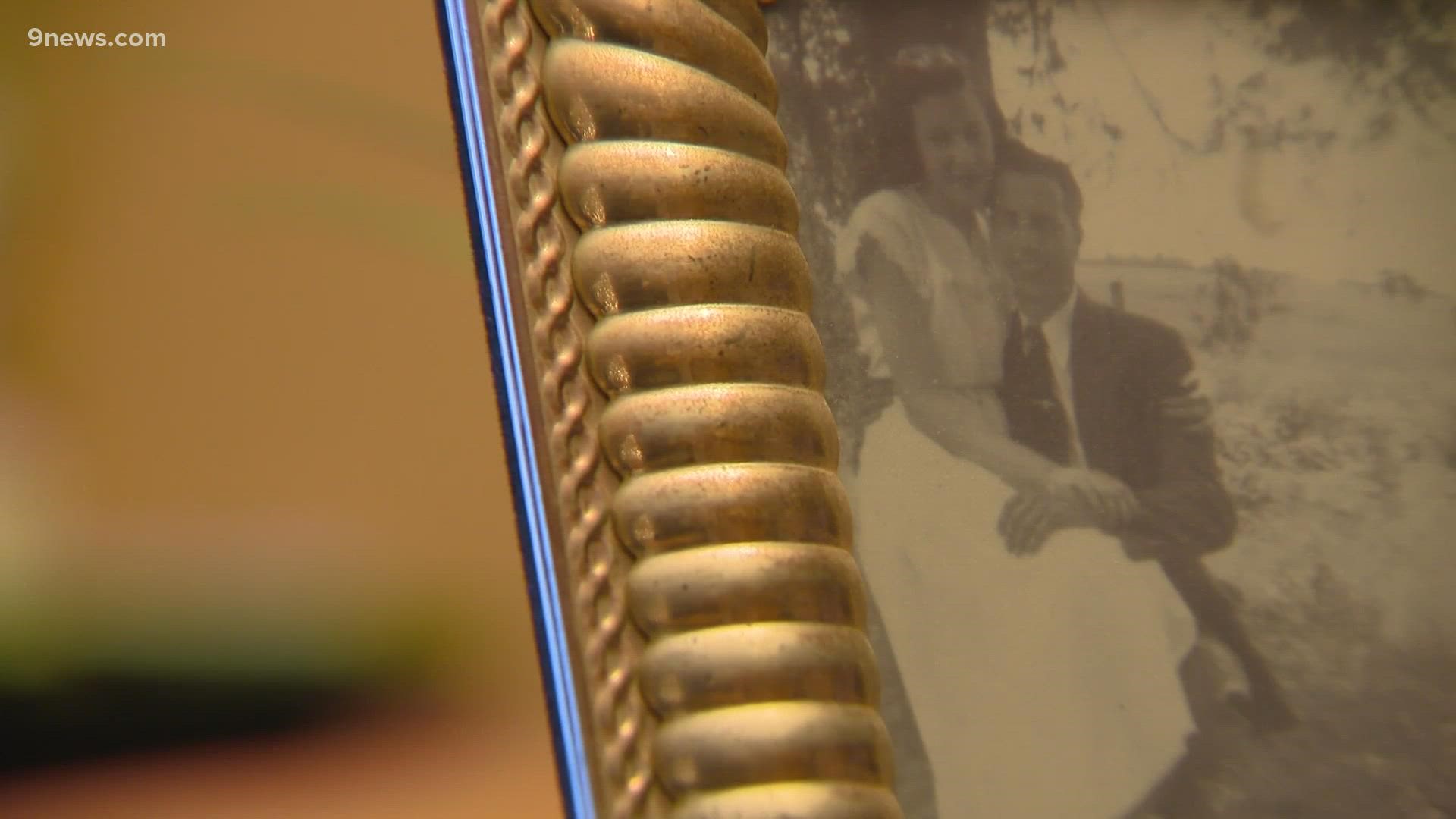BOULDER COUNTY, Colo. — Three months after the Marshall Fire destroyed more than 1,000 homes and businesses in Superior, Louisville and unincorporated Boulder County, a lot of questions remain about how the fire started and the response to it.
The fire, which burned more than 6,000 acres, sparked just after 11 a.m. Dec. 30 near Marshall Road and Highway 93 in Boulder County.
One person was killed and another is still missing after the fire, which was the most destructive in Colorado history.
Below is a look at what we know so far about the fire and its aftermath.
Destroyed properties
Estimates in the days after the fire showed that 1,091 structures were destroyed and 179 were damaged.
9Wants to Know used the data provided by the Boulder County Sheriff's Office as of Jan. 6 on the addresses of destroyed and damaged homes and businesses to create a map that shows the areas hit by the Marshall Fire.
Each one of those scores of dots, many overlapping one another in hard-hit neighborhoods, represents lives altered forever.
Debris removal
Debris removal is one of the first steps in starting over for many of the people who lost their homes due to the fire.
While some have opted to remove that debris on their own, others will use the county debris removal program, which announced this week that work would likely start in two to four weeks.
DRC Emergency Services will be responsible for completing debris removal work for the more than 800 property owners who have opted into the program in Louisville, Superior, and unincorporated Boulder County.
Crews can help remove a number of things, including foundations, driveways and trees. Work is expected to take about four months.
The overall cost of the program is about $60 million. Participating property owners who are covered by homeowners insurance will give the county the part of their payout that is dedicated to debris removal.
Cause and investigation
As of March 30, the cause remains under investigation, but officials are looking into whether there were two separate ignition points, 9Wants to Know found.
The two starting points were documented by a Boulder park ranger who was driving in the area on Colorado 93 when trouble was first reported Dec. 30 – a day that saw hurricane-force winds rake the region.
Multiple videos shot by different people as the fire grew and spread corroborated the ranger’s observations.
That ranger documented a ground fire on the Twelve Tribes property that started about 11:20 a.m. – and then a separate plume of smoke that began rising in open space land to the southwest at about noon.
The area of that second smoke plume, near where the Marshall Mesa trailhead is located, was upwind from the Twelve Tribes property. It was also above a long-smoldering underground coal mine fire and alongside Xcel power lines that parallel Colorado 93.
Investigators are considering both of those possible ignition points.
Below: Videos from the first hour of the Marshall Fire
Emergency notifications
In addition to the cause of the fire, officials are also looking into what may have gone wrong with emergency alerts that some residents complained were sent way too late.
Tawnya Somauroo lost her home in the fire. She lived in a neighborhood just south of South Boulder Road that received an opt-in emergency notification at 1:25 p.m. The neighborhood just south of hers did not receive a notification until 2:51 p.m.
Multiple residents have told 9NEWS that their homes were burning by the time that notification was sent.
A lot of people affected by the fire have asked why Boulder County didn't use a cellphone emergency alert similar to the kind used for Amber Alerts.
Those alerts are sent through a system called Integrated Public Alert and Warning System, or IPAWS. This system, established by FEMA, allows local first responders to geo-target all cellphones in a specific area and send them messages with the alert siren.
Emergency management organizations have to apply to FEMA to use the system. Boulder County was approved to use IPAWS in August 2019 but hasn't been able to get it up and running.
Mike Chard, director of the Boulder Office of Emergency Management, said his office spent the rest of 2019 and early 2020 getting the IPAWS added to their existing emergency notification system and figuring out their next steps.
He said, however, a series of disasters including the COVID-19 pandemic and the King Soopers shooting shifted their focus and resources. That ultimately delayed getting the system online.
RELATED: Boulder County was approved to use cell phone alert system in 2019, but never finished setting it up
The victims
One person died in the Marshall Fire, and a second person remains missing.
Investigators found the partial remains of 69-year-old Robert Sharpe in the 5900 block of Marshall Road, according to the Boulder County Sheriff's Office (BCSO) said. That address is in unincorporated Boulder County.
Family members said he died at his home which was just off Marshall Road.
In a statement, Sharpe's family said they were "grateful for the outpouring of support" as they cope with the loss.


Nadine Turnball, 91, remains missing. Family members said they could not get her out of their home in Old Town Superior during the fire.
"They tried to go out the front door with the neighbor. It was engulfed. Checked the back door it was engulfed," said Hutch Armstrong, Turnball's grandson-in-law.
On Jan. 19, Boulder County officials announced that small bone fragments were recovered at the property where Turnball was last known to be during the fire.
The sheriff's office said scientific testing is underway to determine whether the collected fragments are human or non-human. The office added scientific testing can take weeks to months in these cases.
When asked about the remains on March 23, the Boulder County coroner's office said positive identification was still pending.


9Wants to Know Investigator Kevin Vaughan and reporter Marshall Zelinger contributed to this report.
SUGGESTED VIDEOS: Marshall Fire Coverage


